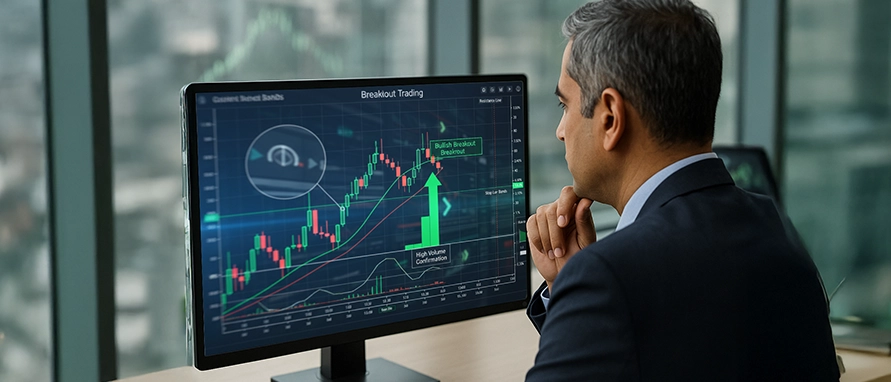Breakout traders often rely on a combination of price action and technical indicators to confirm breakout signals. Here are some of the most commonly used indicators:
1. Volume
Volume is a crucial confirmation tool. A breakout with high volume is more likely to be genuine and sustainable. Low volume breakouts often result in reversals or false signals.
2. Moving Averages
Moving averages help smoothen price data and identify trend direction. Breakouts above the 50-day or 200-day moving average can signal strong bullish momentum.
3. Bollinger Bands
These bands expand and contract with volatility. A breakout above the upper band or below the lower band may suggest a strong directional move is underway.
4. Relative Strength Index (RSI)
RSI indicates overbought or oversold conditions. Breakouts with RSI moving above 70 or below 30 can indicate potential trend strength but also caution for reversals.
5. Chart Patterns
Breakouts often occur from technical patterns like triangles, flags, or rectangles. A confirmed move outside these patterns typically signifies trend continuation or reversal.




.jpeg)






.jpeg)



























